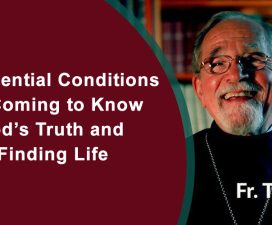Discovery Institute Wesley J. Smith
Sacramento is considering creating an Oregon-style system to end lives
Advocates of assisted suicide label hastened death a “compassionate choice.” But such gooey euphemisms seek to hide the harsh truth: Assisted suicide isn’t about caring: It is about the intentional ending of human life – an act barred by the Hippocratic Oath for more than 2000 years.
We are told that assisted suicide would be restricted to cases of unbearable suffering. Yet, legislation in California to legalize assisted suicide – AB651 by Assemblywoman Patty Berg, D-Eureka – contains no such requirement. Nor does the law in Oregon, where doctors who assist suicides report that most patients do not seek death because of pain, but because they can no longer engage in enjoyable activities, fear losing dignity or are worried about becoming burdens.
Don’t get me wrong: These are important issues that cry out for proper care. Thankfully, we have hospice – true death with dignity – to treat these needs. Indeed, studies show that when these problems are addressed, suicidal desires almost always disappear.
While acknowledging the truth of the previous sentence, assisted-suicide proponents contend there will always be a few people who want assisted suicide, anyway. But placing California’s seal of approval on some suicides would send an insidious message to dying patients that they are burdens; that their illness does make them less worthy of being loved; that they will die in agony. And it would signal the broader society, including young people, that suicide is right in some cases.




“We are told that assisted suicide would be restricted to cases of unbearable suffering.”
Who said that? There’s nothing in the Oregon law about that. People in Oregon knew what they were voting on, and they voted for the law twice.
“Nor does the law in Oregon, where doctors who assist suicides report that most patients do not seek death because of pain, but because they can no longer engage in enjoyable activities, fear losing dignity or are worried about becoming burdens.”
You can read the exact statistics on why people choose PAS on a web site run by the State of Oregon. There are no surprises here.
“But placing California’s seal of approval on some suicides would send an insidious message to dying patients that they are burdens; that their illness does make them less worthy of being loved; that they will die in agony.”
It doesn’t send any such message. People have these concerns with or without a PAS law on the books.
“And it would signal the broader society, including young people, that suicide is right in some cases.”
It sends the signal that people have the right to make that decision for themselves.
Jim:
“It sends the signal that people have the right to make that decision for themselves.”
So far as I know, no one needs a legal right to commit suicide. People do it all the time without the blessing of government.
What PAS/VAE advocates are actually advocating for is not a right to suicide, but a right to ensure that someone makes sure they don’t make a mistake (i.e., they really die and don’t “just” horribly incapacitate themselves) and that they don’t have to suffer the (temporary) pain of, say, a gunshot wound or razor blades.
You can’t put paint on a pig, but it continues to put out incredibly stinky poo.
Clifton writes: “What PAS/VAE advocates are actually advocating for is not a right to suicide, but a right to ensure that someone makes sure they don’t make a mistake (i.e., they really die and don’t ‘just’ horribly incapacitate themselves) and that they don’t have to suffer the (temporary) pain of, say, a gunshot wound or razor blades.”
What actually happens is that PAS gives terminally ill people the opportunity and encouragement to talk about that decision with a physician. That opens the door to conversation about things such as better pain control, hospice, better management of nausea, and so on. After that conversation many of those people will not choose PAS. And of those who do choose PAS and obtain a lethal prescription, many will not take that prescription. Those who actually do take the prescription constitute a very tiny percentage of all people who die.
What terminally ill people value most about PAS is that it gives them some measure of control over their last days. Many express great comfort that it is there if they need it, even though only a very small number ever actually use it. In this way PAS probably actually extends the lives of many of these people, simply because of the added peace of mind; if they need it, it’s there — if they don’t need it, nothing lost.
For those who use PAS the law contains other provisions as well. For example, the death certificate of someone who end his life through PAS lists the cause of death as the underlying disease, not “suicide.”
You may think that it would be better for the family to find grandpa hanging dead in the garage, or with his head blown off with his favorite shotgun. Personally, I think it would be better for grandpa to have a peaceful death surrounded by family and friends, at a time of his own choosing, if he so desires.
Jim:
Nothing in your arguments in anyway establishes a need for PAS/VAE, though it does support the overall argument for hospice. Everything that you note is a concern of potential PAS patients can be handled through hospice and skilled counselling.
Your comment regarding terminal patients having some measure of control over their final days is a red herring. You are not arguing for some measure of control over their final days–which they can obtain through hospice care–but rather the irrevocable decision to kill themselves. Once again, they have that capacity, whether legally recognized or not.
Furthermore, it is another diversion for you to utilize the reductio you do and ascribe to my argument that I’d rather someone off themselves in the most mutilatory and painful way possible. Nice try, no dice. I would rather they not off themselves at all. And in any case, they do not need the ministrations of physicians who are professionally obligated against taking life, since the information for nearly infallibly lethal and relatively painless means for suicide are readily available whether online or through the Hemlock Society or what have you.
No, nothing in your argument supports any conclusion for the legalization of PAS/VAE. Rather, advocacy of such things is merely trying to establish a new pseudo-priestly caste of deathgivers, with the anti-sacramental blessing of the almighty State. Truly a most pernicious and unChristian sort of advocacy.
Clifton writes: “Nothing in your arguments in anyway establishes a need for PAS/VAE, though it does support the overall argument for hospice. Everything that you note is a concern of potential PAS patients can be handled through hospice and skilled counselling.”
To a large extent I agree with you. My wife is a nurse with a masters in gerontological nursing, and she has worked in a hospice. Hospice is great, counseling is great. I have no problem with that at all. I just don’t think that one size fits all. You’re always going to have people who, in spite of the best the medicine has to offer, do not receive adequate pain control or control of other symptoms.
Clifton: “Your comment regarding terminal patients having some measure of control over their final days is a red herring. You are not arguing for some measure of control over their final daysâ��which they can obtain through hospice careâ��but rather the irrevocable decision to kill themselves. Once again, they have that capacity, whether legally recognized or not.”
What I like about the State program is that it provides the option of PAS but only with a number of controls, including record-keeping and consultation with physicians. In other words, I don’t want some terminal patient trying to figure out if he’s going to throw himself out a window or put a plastic bag over his head. I want him talking to his doctor. I want him to hear about hospice. I want him to talk about his fears with a physician. I want him to get counseling if he needs it. When all is said and done, and the terminal patient is still interested in PAS, then so be it. In other words, I’m interested in whatever is the right path for that particular person.
Clifton: “Furthermore, it is another diversion for you to utilize the reductio you do and ascribe to my argument that I’d rather someone off themselves in the most mutilatory and painful way possible.”
Believe me, it’s not a diversion. Some terminally-ill patients do kill themselves. What I want to do is to bring that decision into the context of the physician-patient relationship. My personal belief is that by doing so we actually reduces the number of suicides, and extend life for many people.
You remember Janet Adkins, Dr. Kevorkian’s first “patient?” Around the time of her death, there was a small article in the local newspaper about another Oregonian who died. This fellow was found dead of exposure on Mount Hood. His wife said that he was dying of cancer, and he had gone to the mountain to die. He even took a bus there so his wife wouldn’t have to worry about how to get the car. People do these things. What I want is a situation in which these decisions are made in the context of the physician-patient relationship.
Clifton: “No, nothing in your argument supports any conclusion for the legalization of PAS/VAE.”
My argument is not for PAS per se, but for patient choice.
Clifton: “Rather, advocacy of such things is merely trying to establish a new pseudo-priestly caste of deathgivers, with the anti-sacramental blessing of the almighty State. Truly a most pernicious and unChristian sort of advocacy.”
I suppose it might look like that from a distance. I know some of the people who have been involved in PAS in the State of Oregon. They are extremely compassionate, dedicated physicians. They do not consider themselves priests.
If someone is a terminal patient within a few months death, we’re most likely talking about someone who has been sick for some time, most often in PAS cases, with cancer. We’re talking about an older person who has gone through chemotherapy, surgery, radiation. We’re talking about someone who has experienced a significant loss of function, who may have already gone through great suffering. In my view, this person has paid his dues. He has the right to make the decision that’s right for HIM. And if we can have a program that brings comfort to him and lets him have an end that HE wants, then so much the better. And if some priest or religious dude doesn’t like that, then too bad. I always say, if you don’t like PAS, then DON’T DO IT YOURSELF. But don’t deny the option to others.
Ah, yes, Dr. Jack Kervorkian, that great benefactor to terminally ill patients. Here are the facts (and why he is currently in prison):
Also:
Oregon does not require depression therapy as part of palliative care, BTW.
Hard cases make bad policy. The medical establishment should not become dispensors of death because some suffering is very difficult. It should instead develop even better palliative care — an achievable goal as long as medicine is guided by the ethic that life has instrinsic value. Subsuming the ethic to an individualized choice however, in effect relativizes it, and science will no longer be guided by a shared value that protects the collective good, but by the cost-benefit calculus of medical technocrat.
If your utilitarianism (which is what lurks behind your call for “patient autonomy”) wins in the end, insurance companies will shower you with their accolades. You will save them a ton of cash. You will also, however, be morally and philosophically powerless to resist the encroachment of the death culture into other areas of life.
It’s like abortion. A little abortion here, a little there, pretty soon your killing children two minutes before birth. But hey, what’s an abortion as long as the mother wants one?
Fr. Hans writes: “Dr. Linda Ganzini, director of geriatric psychiatry at the Veteran’s Affairs Medical Center in Portland, Oregon writes, ‘[S]tudies of dying cancer patients reveal that between 59-100% of patients wanting hastened death have major depressive disorders. Depressed people often focus on the worst possible outcomes and are impaired by apathy, pessimism, and low self-esteem. The experience of palliative care psychiatrists is that depression treatment is effective in terminally ill patients.'”
I’m not sure when she wrote this. What’s going on here is that physicians such as Ganzini are trying to understand the dynamics of physician-assisted suicide. I have not read everything she’s written, but I think she is functioning as a researcher, not as either an opponent or proponent.
For example, here’s one comment she made in 2004:
“We have surveyed physicians, social workers, hospice nurses and other health care professionals who have cared for these people [requesting PAS],” Ganzini told Psychiatric Times. She added that most of the professionals “have agreed that depression is not an important reason, which is not what I expected to see.”
http://www.psychiatrictimes.com/p040101b.html
In other words, the characteristics of the population requesting PAS may be different from the larger population of cancer patients “wanting hastened death.”
By the way, in a research proposal I saw, Ganzini says that “[m]ajor depressive disorder can be diagnosed in between 5% and 26% of terminally ill patients.”
http://www.hsrd.research.va.gov/research/abstracts/IIR_03-194.htm
So we have the following populations:
** all terminally ill cancer patients – 5 to 26 percent rate of depression
** cancer patients seeking hastened death – 59 to 100 percent depression [the large variance obviously shows the need for more studies]
** PAS patients (including non-cancer patients) — about a 33 percent psychiatric referral rate.
Since PAS patients include more than just cancer patients, it may be that the lower figures are more characteristic of people requesting PAS — which could explain why we see around one-third of PAS patients referred for psychiatric evaluations.
Fr. Hans: “[The medical establishment] should instead develop even better palliative care â�� an achievable goal as long as medicine is guided by the ethic that life has instrinsic value.”
What’s interesting is that in the Psychiatric Times article I referred to earlier, it says that for every ten people explicitly requesting PAS, only one actually dies by PAS. Ganzini says that “There is a great deal of winnowing at the point of the request. Physicians make interventions that help patients change their minds, the most important being a referral to hospice. What [this] suggests is that, among patients who request suicide, a substantial portion will change their minds with improved palliative care.”
But that’s not going to work for everyone. Ganzini also reports that “palliative care cannot give patients the control they want. It’s tough to leave this world totally in the driver’s seat. Not wanting people to take care of you is particularly frightening for people who want assisted suicide.”
Also, while hospice is satisfactory for many, it doesn’t work for all:
“Nor is improved hospice care always an alternative. Oregon has one of the highest rates of deaths in hospice of any state, but some patients are not satisfied with that choice. ‘It turns out that 85% of people who die by assisted suicide in Oregon are in a hospice and have been there for a median of seven weeks,’ Ganzini said.”
And this is my point exactly: one size doesn’t fit all. Palliative care and hospice are great options, but they don’t work for everyone. It may be that PAS patients are different from other kinds of patients. Ganzini notes that
“The patients who ended their lives this way were in general very assertive, independent, determined, persuasive people who put a great deal of effort into determining how they were going to die . . .The ambivalent are left behind, because they don’t have energy to fight.”
Fr. Hans: “If your utilitarianism (which is what lurks behind your call for ‘patient autonomy’) wins in the end, insurance companies will shower you with their accolades. You will save them a ton of cash.”
I suppose there is a kind of individualistic moral ethic behind PAS, but it certainly isn’t utilitarianism. As far as the medical costs, people who die by PAS make up such a tiny percentage of patients that they wouldn’t even make a blip on the radar. Besides, these are patients who have already had the expensive interventions and diagnostic procedures. What’s left for them is relatively low-cost care.
By the way, your insurance argument and your slippery slope argument against PAS work just as well as arguments against no-code orders. Better actually, because there are vastly more no-code patients than PAS patients. You know, a little no-code here, a little no-code there, and pretty soon we just let everyone die without doing anything.